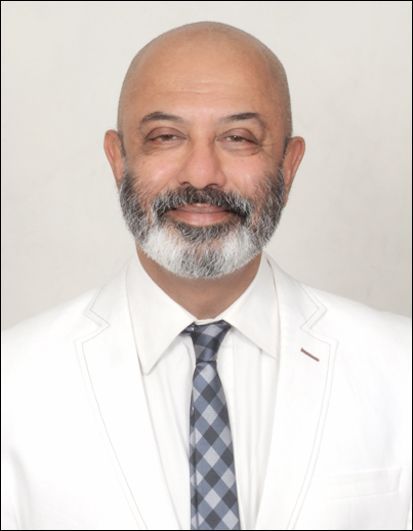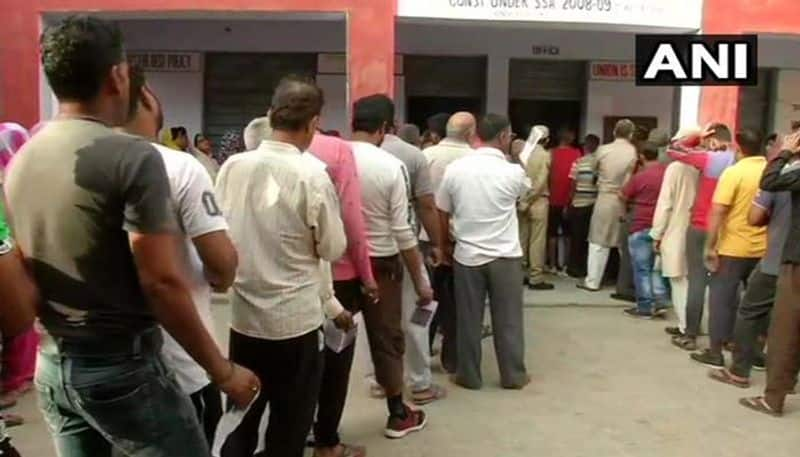The prospect of a resounding victory and second term for Narendra Modi as Prime Minister is quite bright. It wouldn’t matter so much if the Modi-Shah combine at the NDA apex were not quite so assertive and transparent in its intent to decimate the Congress in particular.
New Delhi: The anxiety being experienced by a scared and scattered Opposition is understandable. The first round of electioneering appears to have gone badly for N Chandrababu Naidu’s Telugu Desam Party (TDP) in Andhra Pradesh (AP).
This is significant because Naidu is now one of the tallest pillars of the handholding-on-a-dais opposition alliance cum photo-op.
Another, Bengal’s Mamata Banerjee, is also likely to lose a significant number of seats to a determined BJP challenge and is no longer in a position to dream of becoming prime minister herself.
The SP-BSP combine in Uttar Pradesh may not achieve that by-poll like results. The whisper campaign advises Akhilesh Yadav’s SP voter not to transfer its vote to Mayawati’s BSP. And this being the third great pillar, also looks shaky.
The scenario in Bihar is murky, and Lalu Prasad Yadav’s RJD cannot, by itself, pull the gatbandhan out of the mire.
The likely victor in AP which has had simultaneous Lok Sabha and Assembly polls is Jaganmohan Reddy. Reddy, the former Chief Minister of undivided Andhra Pradesh’s son. He has not allied himself with the BJP or the NDA as yet. But, he will probably go whither neighbour, and ally Chief Minister K. Chandrashekhar Rao ( KCR) of Telangana Rashtra Samithi (TRS) does.
In the absence of exit polls, not allowed by the Election Commission (EC), till after the last round of voting in May, the Satta Bazaar has swiftly issued its brutal verdict. And since it puts its money where its mouth is, it cannot be taken lightly.
The prospect of a resounding victory and second term for Narendra Modi as Prime Minister is quite bright. It wouldn’t matter so much if the Modi-Shah combine at the NDA apex were not quite so assertive and transparent in its intent to decimate the Congress in particular.
That the prime minister and party president, do not particularly resemble Atal Bihari Vajpayee’s administration, terrifies the Opposition. The old niceties are gone. There is no quid pro quo required.
Talk of much stronger sedition law, along the lines of the erstwhile TADA, has already been floated by the incumbent Home Minister Rajnath Singh after the NDA returns.
The Congress, which most of the Opposition is shying away from, see themselves as the main target to be erased from the political narrative.
Vajpayee’s administration that ended in 2004, being the only other BJP/NDA government seems like a very different thing. It lulled the UPA that came back to power for a decade after into an existential complacency. Rahul Gandhi gave voice to it by asserting it was the default party of government and was destined to come back to power.
But in 2019, this looks like a pipe dream, despite the unleashing of a blizzard of misinformation, rhetoric, and election-oriented propaganda. Rahul Gandhi might have been right if Modi were indeed like Vajpayee. The latter admired Jawaharlal Nehru and fancied himself as something of a Nehruvian.
Narendra Modi and Amit Shah have very different heroes. To them, the long lost and obscured icons of the RSS, and the Jan Sangh have to be given their due and pride of place. The sins of omission, commission, and humungous corruption of the Nehru-Gandhi dynasty have been given full play, resulting in a considerable public disenchantment with this family.
Modi and Shah have spearheaded an unabashed nationalist projection that demands fealty and old fashioned patriotism. There is little patience for liberal prevarication and silky sedition in the name of diversity and pluralism. The forthrightness of the rejection of much that stood for the Nehruvian “Idea of India” is stark.
Modi terms everything he stands for as the vision for a “New India”. This India puts national self-interest first in foreign affairs and seeks to build a robust economy, strong physical and security infrastructure. It works for the elimination of poverty and corruption with a plethora of concrete steps. It refuses to countenance the exploitation of poverty Congress-style to perpetuate itself in power. It works for the rich, the technologists, the innovators, foreign interests, the middle class, the nationalists, Hindutva, and the poor, all at the same time. It is determined to join the ranks of the developed world within a decade.
Under the NDA regime, several groups have tried their hand at the restoration of Hindu pride. This religion of the majority of Indians was severely oppressed in the name of a sinister corruption of the secular ideal. But, the coming of Modi’s version of the NDA, is a page break from the past. In the progress of India as an independent nation, it marks a new beginning.
The history of contemporary India, when written at the century mark in 2147 will probably split its narrative to before 2014 and after. Before 2014, the dominant ideas that ran India came almost totally, from the Nehru-Gandhi family, with brief interruptions in power terms, when others ruled.
But none of these other governments except NDA I, had any great difference in their socialist vision for India that condoned economic under-performance, protectionism, and grinding poverty for millions, almost as if it was a virtue.
The most significant departure of those years, however, was the administration of Prime Minister PV Narasimha Rao. The erudite Rao, despite being a career Congressman, did lay the foundations of the New India. But PV Narasimha Rao’s departure from the Congress line was in economic matters, where his liberalisation and unfettering of the economy, the introduction of foreign companies and global competition, made it impossible to go back to the way things were.
It was this that Vajpayee, mostly in things strategic and economical, and to a much greater extent Modi, built upon.
Vajpayee dared to take India nuclear and built the Golden Quadrilateral of highways. The Modi-Shah combine which won the first majority in 30 years, not only set about making the NDA the dominant political presence on a pan-India basis but decided to challenge the Nehruvian Idea of India.
They did not flinch when a veritable hornet’s nest of revisionists counter-attacked, earning the admiration of the aspirational young, fed up with the status quo. This is the significant departure culturally that is revising the DNA of India. But it is not all rousing speeches. The Modi government has addressed every other heading towards the modernisation of India’s infrastructure and performance with varying degrees of success in its first five years.
There has long been a mismatch between the traditional narratives heard by every child at home from the elders and the edited ideas put forward by a so-called modern Nehruvian India. An edited version that seemed to build upon Macaulay’s intent of making Indians ashamed of their heritage, in favour of Western ideas. That such a thing, designed to turn out educated but under-confident babus for the Raj, would be incorporated into independent India’s education system, particularly in the Humanities, is doubly reprehensible.
Modi, a follower of Vivekananda, has demonstrated the courage to be a proud Indian. Millions of people have decided to follow his inspiring example. This sort of thing is alien to the floundering Congress leadership, still milking Nehru’s ideas from generations ago. The present administration with its sense of dynastic entitlement, can’t understand how a sheep-like populace that reposed faith in it has now, so conclusively, turned away.
As things stand today, it is not only that there will be an NDA win in 2019, but the Congress will shrink even further from its pathetic showing in 2014. India has come of age, ready to take its rightful place in the sun, led by a charismatic, honest and visionary leader.
Last Updated Apr 17, 2019, 7:15 PM IST











![Salman Khan sets stage on fire for Anant Ambani, Radhika Merchant pre-wedding festivities [WATCH] ATG](https://static-ai.asianetnews.com/images/01hr1hh8y86gvb4kbqgnyhc0w0/whatsapp-image-2024-03-03-at-12-24-37-pm_100x60xt.jpg)
![Pregnant Deepika Padukone dances with Ranveer Singh at Anant Ambani, Radhika Merchant pre-wedding bash [WATCH] ATG](https://static-ai.asianetnews.com/images/01hr1ffyd3nzqzgm6ba0k87vr8/whatsapp-image-2024-03-03-at-11-45-35-am_100x60xt.jpg)



